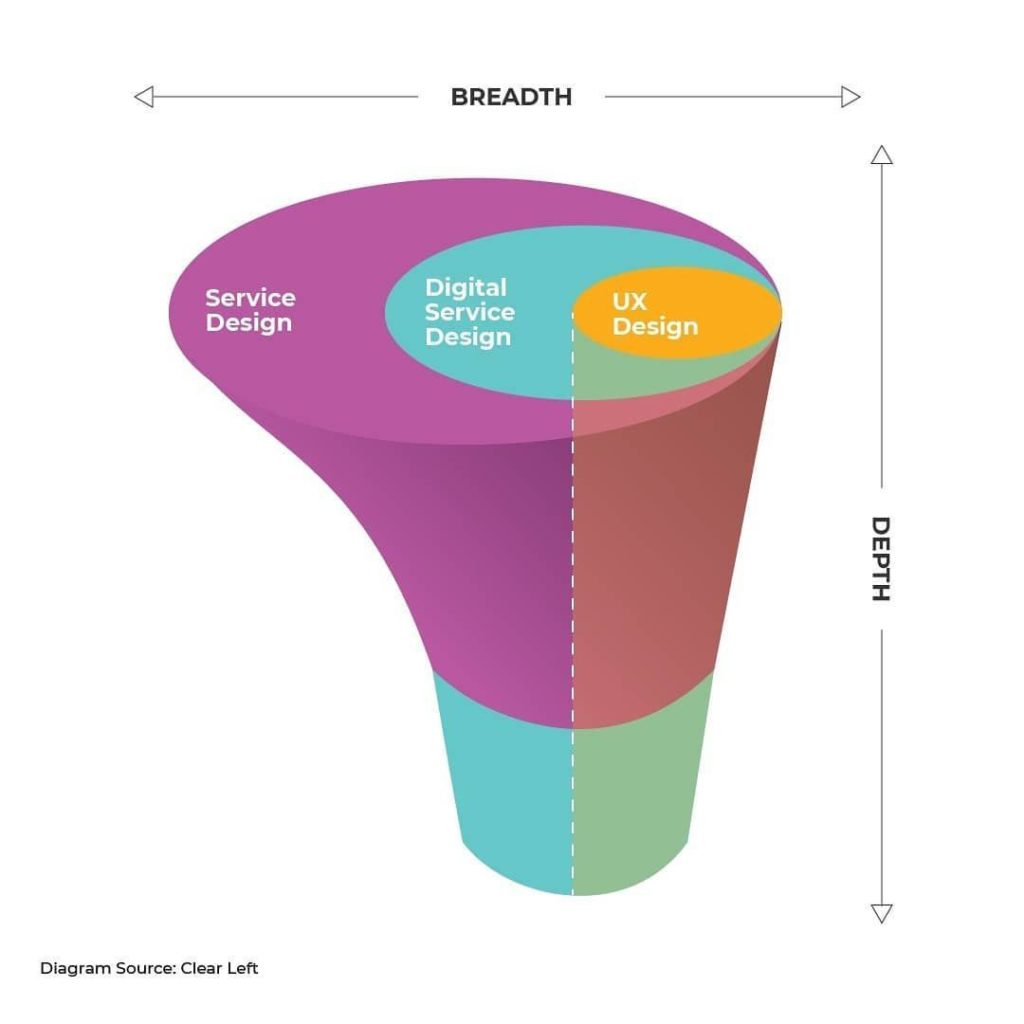Some of the typical growing pains we see are:
- Too many disjointed products & services under one roof
- Hiring quickly, but not strategically
- Launching, launching, launching!
- No time for research – falls to the bottom of the priority list.
In this article, we’re going to break these challenges down, explain the long-term effects you might experience, and how your team can make some quick adjustments to get back on track for an improved user and customer experience.
Growing Pains: Broken Down
1. Too many disjointed products and services under one roof
There are a few ways this growing pain can manifest. For example, you might be dealing with growth via a recent merger or acquisition… and all of the sudden you have a bunch of new digital products and services under one roof. These products and services have entirely different experiences, branding, and functions. They may even operate similarly with added features ––but again, have entirely different user experiences and patterns. Or, you may have recently launched a new digital product or service (perhaps sooner than planned) because demand was so high… or maybe your portfolio has organically increased over time.
However this came to be, you might be feeling like your various products and services don’t match up. There may be lack of clear vision, utterly different user experiences, varying looks, feels, and branding, no commonality in UI patterns, and more.
What suffers?
A collection of disjointed products and services is confusing for your account managers and sales teams, who are trying to sell your products. It’s also confusing for existing customers and new customers alike. They may be trying to decide which products they need, but are feeling lost. Without a clear story or cohesive experience guiding your customers across your company’s digital touchpoints (products, services, websites, and so on), you’re losing out on new customers and frustrating your existing ones.
Quick Fix:
- Create a product vision and guiding experience principles that will act as a beacon for your product/service decisions. This ensures a consistent user experience across platforms! Download our North Star Principles ebook for a step-by-step on how to easily guide you and your team through this process.
2. Hiring quickly, but not strategically
Lately, roles like “Product Manager” and “Digital Transformation Manager” are popping up everywhere. At the same time, there has been a big boom/demand for software developers and UX/UI designers. As reported by CompTIA, the Tech industry ranks third in projected employment growth across all industry sectors. For those of us who are in the tech industry, this is great news! However, this rapid growth and an organization’s movement along the UX Maturity Scale can also bring with it some big headaches for the companies doing the hiring.
Here is a very common scenario we see: more digital products and services means your organization needs more product managers. Product managers are some of the busiest people we know – they identify priorities, set the product vision, keep tabs on market/competitor trends, track KPIs, work with engineering to define feature releases, and much more. Sometimes, product managers (PMs) get so busy that companies think they need to hire more PMs to keep up with demand. If you have new products or services (see Growing Pain #1 above), you may need someone new to manage that product. We also commonly see very solid rosters of engineers and software architects being managed by a VP or Director of Engineering. This is great because if you have digital products, you need people to build them and fix them when issues arise.
Following that, a company might decide they need a UI designer (to handle the “look and feel”), but they might also realize, at this point, they need MORE than just UI support. Enter: the UX Designer. In summary, most modern companies have a (very small) handful of designers, a giant handful of engineers, and a plethora of project managers.
You might be thinking: “This sounds great! These companies have it under control!” Actually, what you’ll find is that engineering and product teams are bringing designers into the product development process wayyy too late, and they are dictating how features should be designed in the interface. With no UX governance (such as a Director of UX), those low-level UI/UX designers may not be able to champion best UX practices.
What suffers?
What happens then? Simply put, even with the best designer on board, your user experience suffers. Your digital products will stay clunky, broken, and less than the best. This is because those one or two designers will be floundering under the pressure and direction of engineering and product. They cannot possibly keep up with the demands of the next feature they need to deliver on, while championing the needs of the user, while trying to conduct UX research, while also trying to educate the organization about proper UX processes.
Quick Fix:
- Hire a UX Lead (or if you can manage it, a UX Director). Make sure this person has experience educating senior stakeholders. Then hire two mid-level or junior designers who can do the grunt work while your Lead champions, educates, and defines the UX process.
- Hire a seasoned UX consulting firm to be your coach and get your processes inline until you can bring on more long-term help.
3. Launching, launching, launching!
Wow! Demand has increased, your sales are up, and you’re busier than ever! This is amazing. However, what you might be finding at this point is that your feature releases and new product launches are speeding up. You need to get to market faster, because while your business is booming, so is the competition’s. Your customers NEED these features NOW! Maybe you even have some high-ticket customers who are demanding a particular feature, and since they comprise a lot of your business, you want to keep them happy. So you (and your team) keep rolling out features as quickly as possible.
What suffers?
With frequent launches and releases, you might be starting to see some cracks. For example, maybe the features are very buggy, and there wasn’t enough time to test them before launching. This inevitably leads to more customer support calls and issues down the line. You might be finding that because you’re launching SO many new features, some are “half-baked” ideas. There wasn’t time to fully form these new features due to the very compressed timelines. This means that you put something out that’s kind of broken, and it doesn’t really solve your customer’s needs. If you had waited a little bit longer to go through the proper UX process (going through the steps of de-risking your launch), your feature might have been a huge success and a game-changer for your customers. Finally, by releasing something a little too soon, you might also be establishing some confusing UI patterns for your user. This can be difficult to go back to and change without confusing them again.
Quick Fix:
- Start involving design earlier in the process (so they have as much time as possible to do the design work).
- Conduct some usability testing before launching with 5–8 users (this can be very quick, and it will help to make sure your product/feature launch doesn’t flop).
4. No time for research
This challenge always seems to exist no matter a company’s stage of growth. When things are moving so quickly that your team is struggling to keep up, the last thing tech-led companies feel like they have time for is talking to their customers and performing UX research. This falls to the very bottom of the priority list. If it is happening, it might only consist of side-bar conversations with your favourite (or most opinionated) customers. THIS IS NOT RESEARCH, folks! While it’s great to get some off-the-cuff feedback from a few trusted customers, it’s also important not to base product decisions on the opinions of only a few biased people.
What suffers?
When you don’t have time to build in a few weeks of customer research, you might be creating and spending a lot of money on something that misses the mark. In other words, you’re spending hundreds of thousands of dollars and dedicating endless hours of labour to develop a product that doesn’t deliver a problem solving experience. Not only is research itself important, but conducting unbiased research is an essential part of this process. If you’re conducting your research inhouse, you may not be uncovering a true picture of your customer experience.
Quick Fix:
- Expand beyond customer surveys! Surveys are relatively easy to create and distribute, but you can only gather so much information. Instead…
- Conduct in-depth interviews with 12–15 of your customers before your next release! You’ll be amazed at what you find out.
- Conduct contextual observations to uncover unspoken needs and motivations and get a sense for how your products are actually being used in the real world.
Product development is moving faster than ever right now––and inevitably, challenges will arise for companies trying to keep up with demand. UX practitioners are necessary resources for teams seeking to attract long-term, loyal, and satisfied customers.







